Abstract
Three field inoculation experiments, two in Florida and one in New Mexico, were conducted with Azospirillum brasilense Cd. Each of the Florida experiments evaluated two crop species. One species in each of the Florida experiments responded to inoculation with a significant dry matter yield increases of 11 to 24% and nitrogen yield increases of 9 to 39%. No inoculation response was noted in the New Mexico experiment. The responding species were Sorghum bicolor (L.) Moench (sorghum) and the interspecific hybrid between Pennisetum americanum (L.) K. Schum. (pearl millet) and P. purpureum Schumach. (napiergrass). Nonresponding species were pearl millet (Florida) and Sorghum sudanense (Piper) Staph. (New Mexico). Acetylene reduction activity of inoculated plots in Florida was low, showing no increase over the natural uninoculated background rates and, in one case, was negatively correlated with yield. Acetylene reduction activity was not measured in New Mexico. In Florida, A. brasilense populations were found to decline from 5 × 103 to 5 × 102 bacteria g of soil−1 in about 3 weeks (quadratic regressions). Continued decline to less than 102 by week 5 indicated that the inoculated bacteria did not become established in the soil in high numbers. The A. brasilense population declined at about the same rate in the New Mexico experiment. The erractic inoculation responses in these experiments are similar to those observed in earlier work at the University of Florida. The lack of acetylene reduction activity response to inoculation and the rapid population decline of the inoculated bacteria suggest that N2 fixation is not the major mechanism causing yield responses after inoculation.
Full text
PDF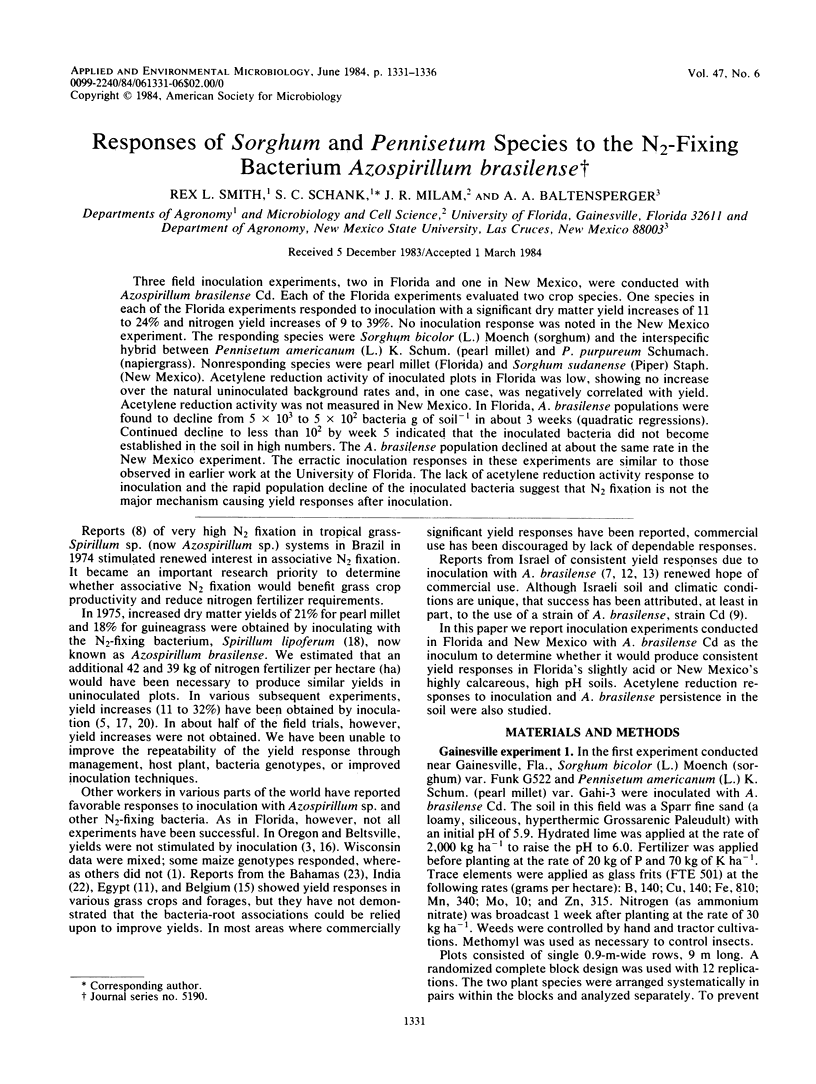
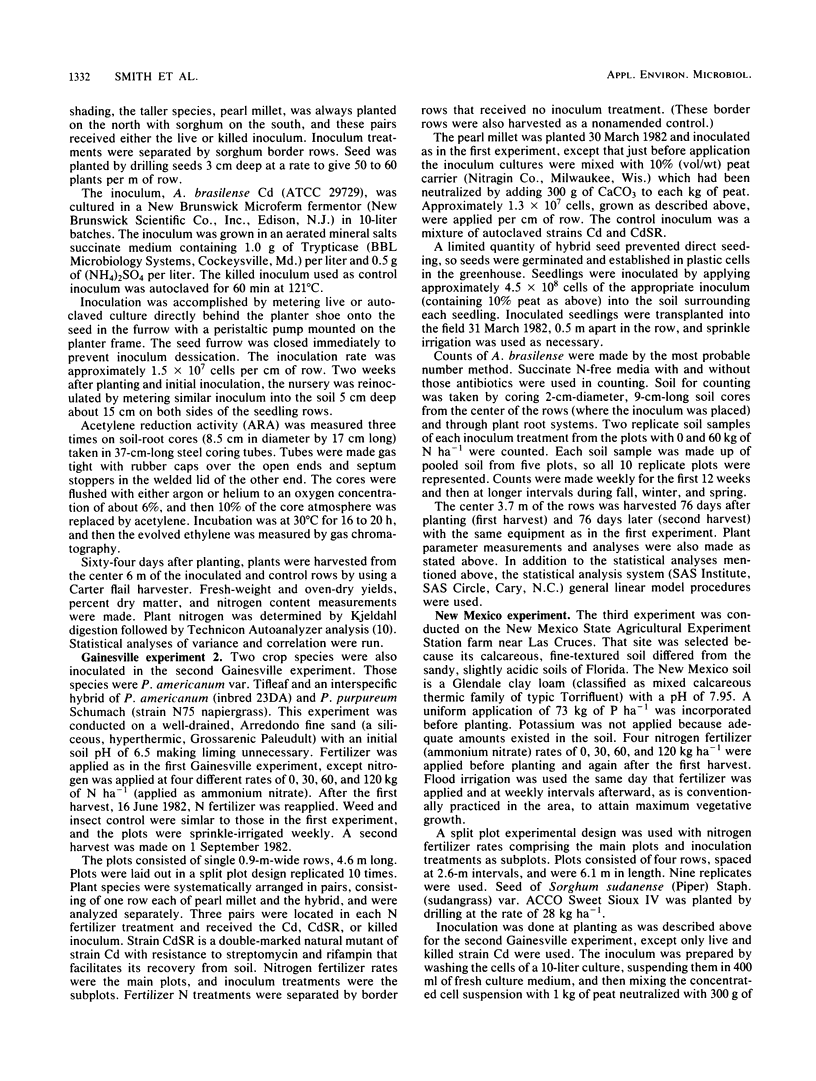
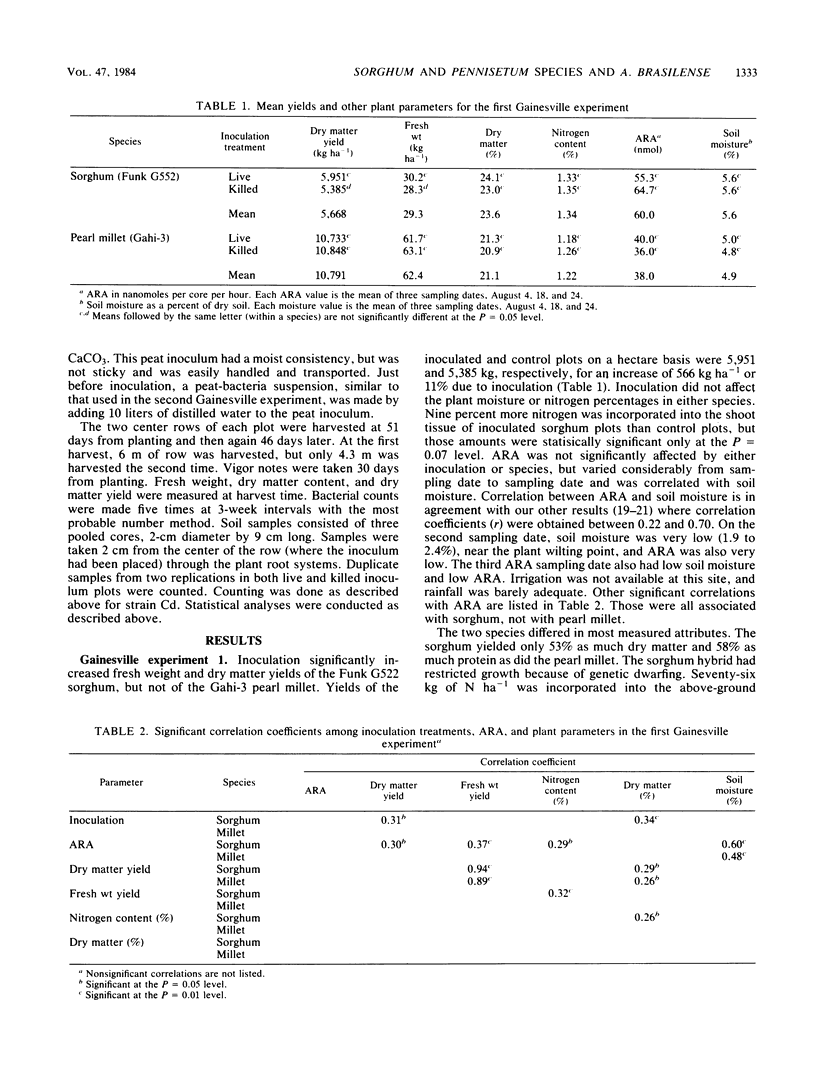

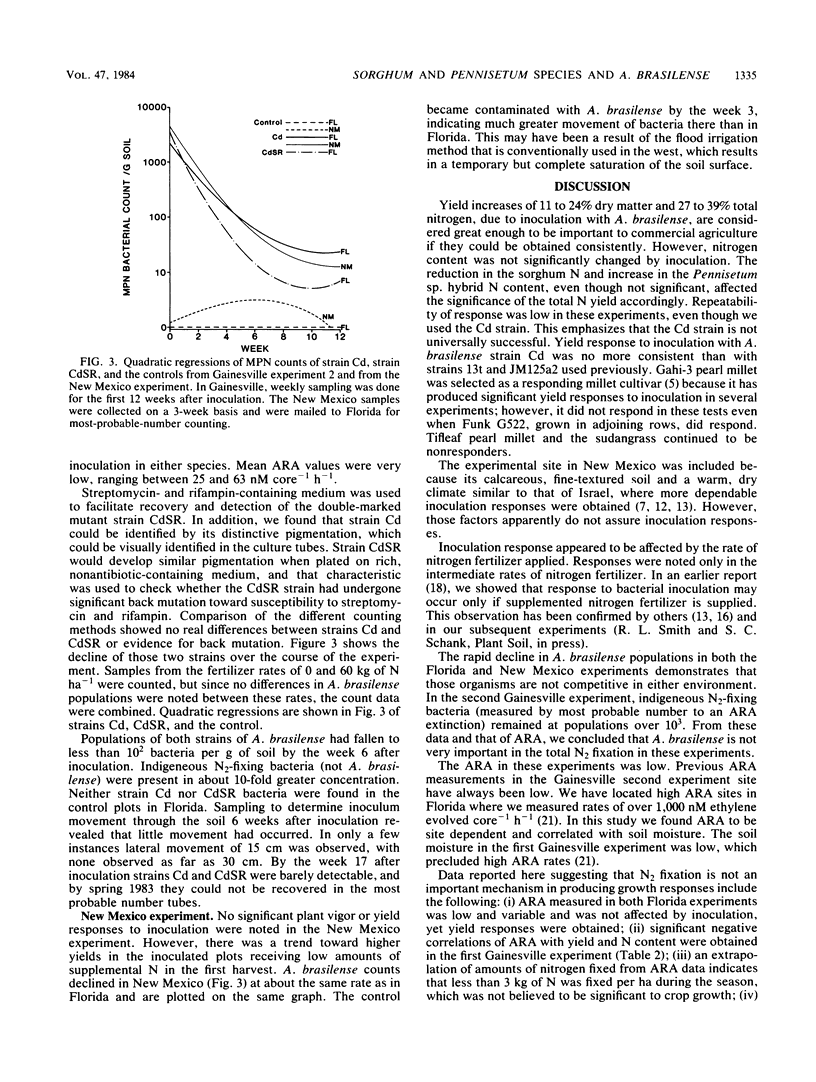
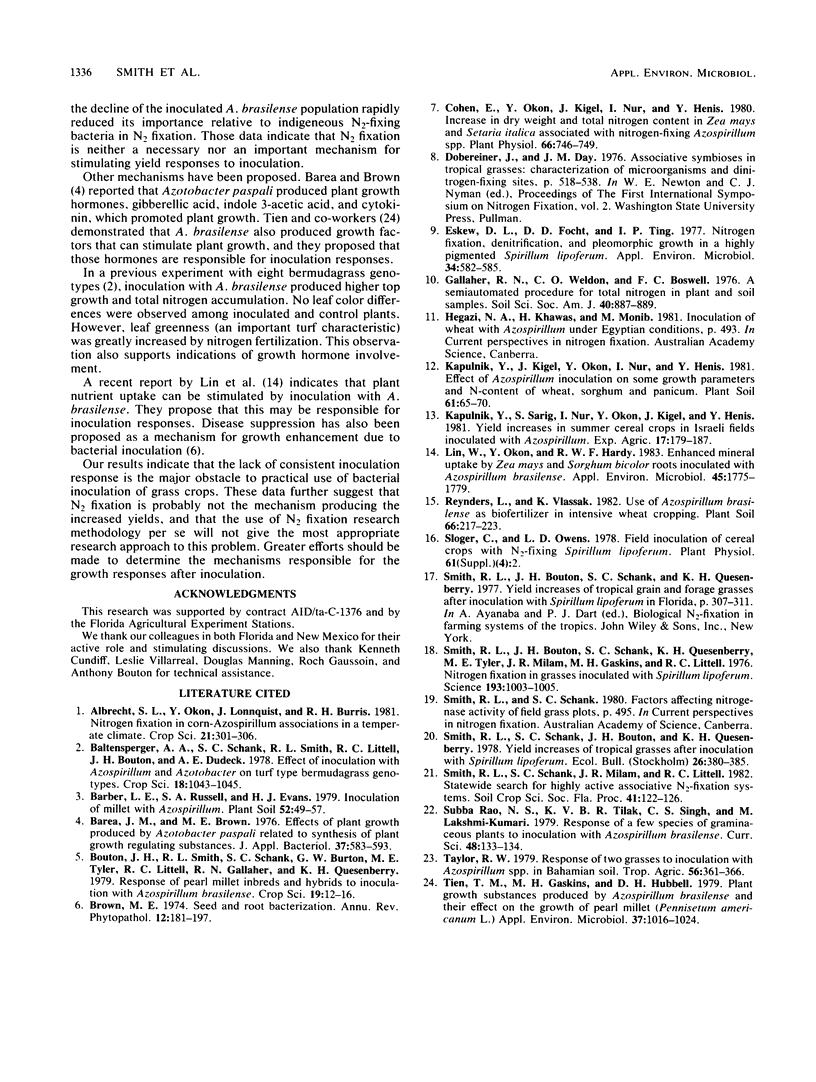
Selected References
These references are in PubMed. This may not be the complete list of references from this article.
- Barea J. M., Brown M. E. Effects on plant growth produced by Azotobacter paspali related to synthesis of plant growth regulating substances. J Appl Bacteriol. 1974 Dec;37(4):583–593. doi: 10.1111/j.1365-2672.1974.tb00483.x. [DOI] [PubMed] [Google Scholar]
- Cohen E., Okon Y., Kigel J., Nur I., Henis Y. Increase in Dry Weight and Total Nitrogen Content in Zea mays and Setaria italica Associated with Nitrogen-fixing Azospirillum spp. Plant Physiol. 1980 Oct;66(4):746–749. doi: 10.1104/pp.66.4.746. [DOI] [PMC free article] [PubMed] [Google Scholar]
- Eskew D. L., Focht D. D., Ting I. P. Nitrogen fixation, denitrification, and pleomorphic growth in a highly pigmented Spirillum lipoferum. Appl Environ Microbiol. 1977 Nov;34(5):582–585. doi: 10.1128/aem.34.5.582-585.1977. [DOI] [PMC free article] [PubMed] [Google Scholar]
- Lin W., Okon Y., Hardy R. W. Enhanced Mineral Uptake by Zea mays and Sorghum bicolor Roots Inoculated with Azospirillum brasilense. Appl Environ Microbiol. 1983 Jun;45(6):1775–1779. doi: 10.1128/aem.45.6.1775-1779.1983. [DOI] [PMC free article] [PubMed] [Google Scholar]
- Smith R. L., Bouton J. H., Schank S. C., Quesenberry K. H., Tyler M. E., Milam J. R., Gaskins M. H., Littell R. C. Nitrogen Fixation in Grasses Inoculated with Spirillum lipoferum. Science. 1976 Sep 10;193(4257):1003–1005. doi: 10.1126/science.193.4257.1003. [DOI] [PubMed] [Google Scholar]
- Tien T. M., Gaskins M. H., Hubbell D. H. Plant Growth Substances Produced by Azospirillum brasilense and Their Effect on the Growth of Pearl Millet (Pennisetum americanum L.). Appl Environ Microbiol. 1979 May;37(5):1016–1024. doi: 10.1128/aem.37.5.1016-1024.1979. [DOI] [PMC free article] [PubMed] [Google Scholar]


